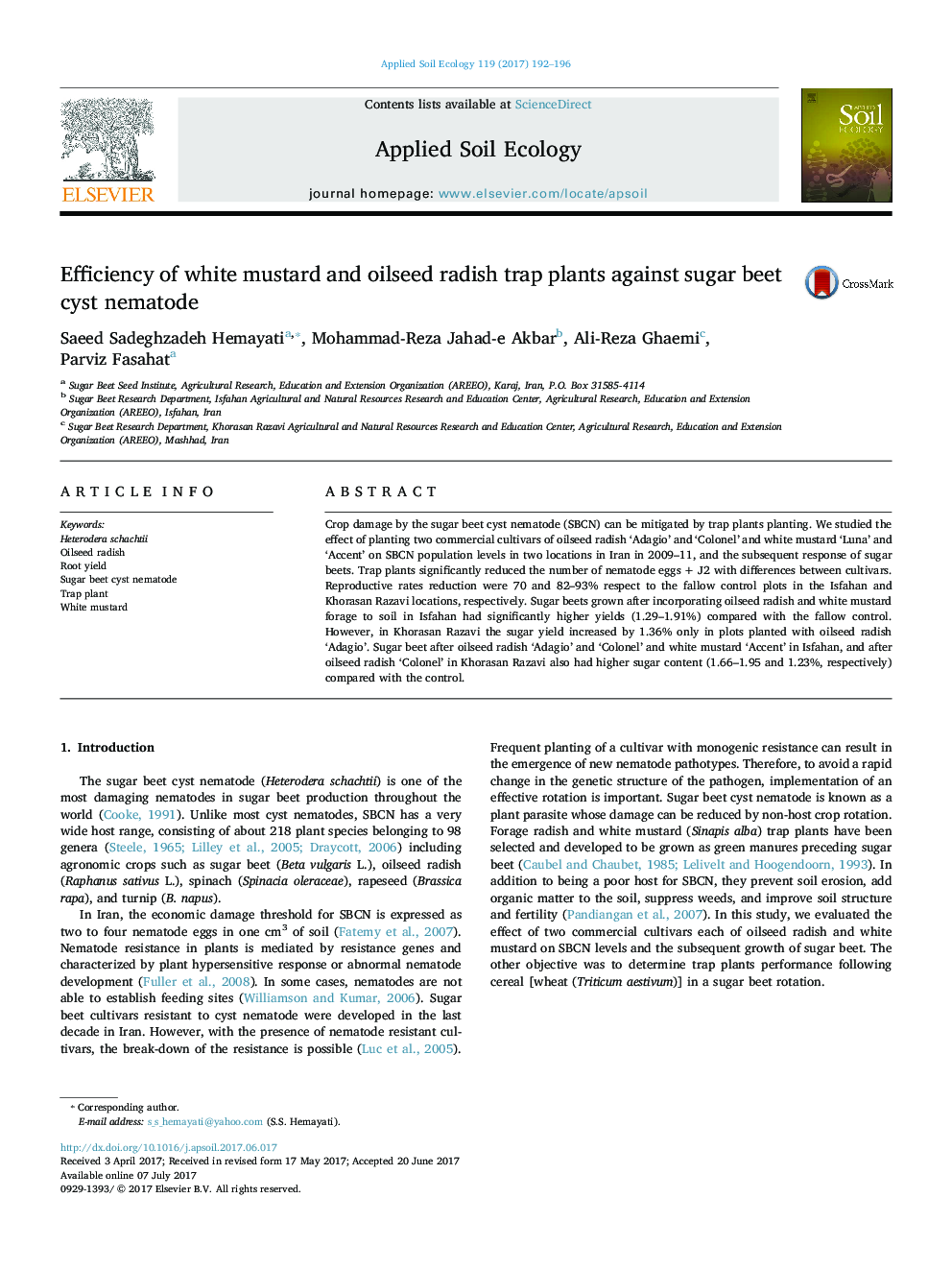| Article ID | Journal | Published Year | Pages | File Type |
|---|---|---|---|---|
| 5742624 | Applied Soil Ecology | 2017 | 5 Pages |
â¢The effect of trap plants on sugar beet cyst nematode (SBCN) level was studied.â¢Trap plants did not consistently decrease SBCN population in two environments.â¢Trap plants reduced SBCN level with differences between cultivars.â¢Cultivar selection is important for trap plants growing prior to sugar beet planting.
Crop damage by the sugar beet cyst nematode (SBCN) can be mitigated by trap plants planting. We studied the effect of planting two commercial cultivars of oilseed radish 'Adagio' and 'Colonel' and white mustard 'Luna' and 'Accent' on SBCN population levels in two locations in Iran in 2009-11, and the subsequent response of sugar beets. Trap plants significantly reduced the number of nematode eggs + J2 with differences between cultivars. Reproductive rates reduction were 70 and 82-93% respect to the fallow control plots in the Isfahan and Khorasan Razavi locations, respectively. Sugar beets grown after incorporating oilseed radish and white mustard forage to soil in Isfahan had significantly higher yields (1.29-1.91%) compared with the fallow control. However, in Khorasan Razavi the sugar yield increased by 1.36% only in plots planted with oilseed radish 'Adagio'. Sugar beet after oilseed radish 'Adagio' and 'Colonel' and white mustard 'Accent' in Isfahan, and after oilseed radish 'Colonel' in Khorasan Razavi also had higher sugar content (1.66-1.95 and 1.23%, respectively) compared with the control.
